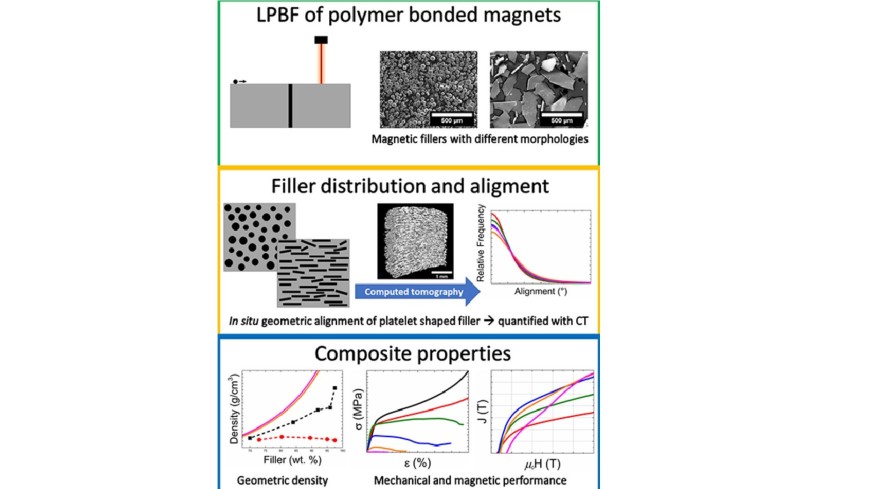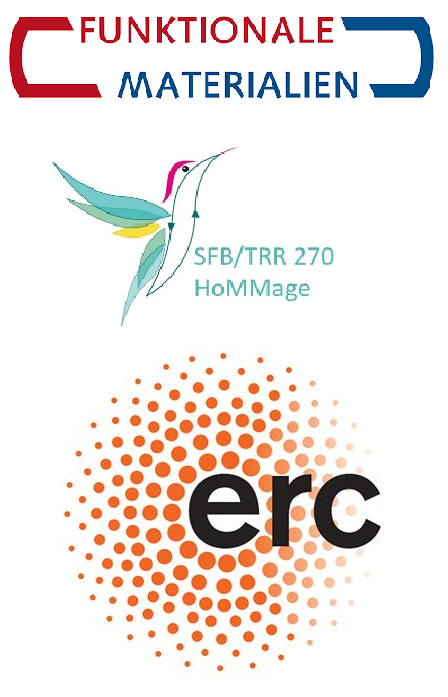Polymer-bonded magnets produced by laser powder bed fusion: Influence of powder morphology, filler fraction and energy input on the magnetic and mechanical properties
New publication
2022/10/05

K. Schäfer, T. Braun, S. Riegg, J. Musekamp, O. Gutfleisch
Materials research Bulletin, 158, 112051 (2022).
Bonded permanent magnets are key components in many energy conversion, sensor and actuator devices. These applications require high magnetic performance and freedom of shape. With additive manufacturing processes, for example laser powder bed fusion (LPBF), it is possible to produce bonded magnets with customized stray field distribution. Up to now, most studies use spherical powders as magnetic fillers due to their good flowability. Here, the behavior of large SmFeN platelets with a high aspect ratio as filler material and its influence on the arrangement and the resulting magnetic properties are examined in comparison to a spherical magnetic filler. The 3D distribution and orientation of the magnetic filler was studied by computed tomography and digital image analysis. The platelet-shaped particles align themselves perpendicular to the buildup direction during the process, which offers a new and cost-effective way of producing composites by LPBF with anisotropic structural and functional properties. The influence of LPBF parameters on the properties of the composites is investigated. Highest filling fractions are required for high magnetic remanence, however the powder itself limits this maximum due to particle shape and required minimal polymer fraction to form mechanically stable magnets. The coercivity decreases for higher filling fractions, which is attributed to increased rotation of insufficiently embedded magnetic particles in the matrix. It is discussed how filler morphology influences the observed change in coercivity since the rotation of spherical particles in comparison to platelet-shaped particles requires less energy. Our work shows the challenges and opportunities of large platelet shaped fillers used in LPBF for the production of anisotropic functional and structural composites.



